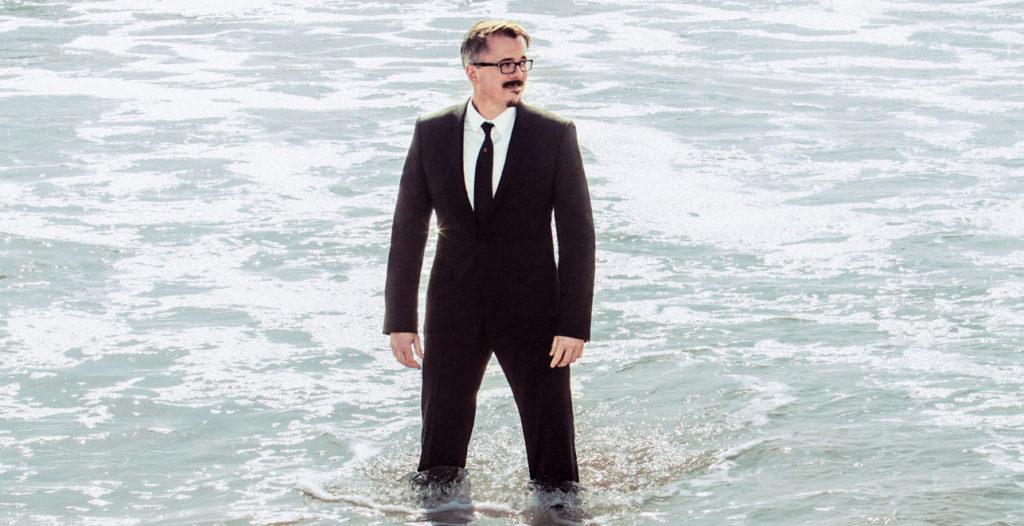While giving a speech at the Edinburgh International Television Festival, actor Kevin Spacey said “the King of television is the creatives.”[note]http://www.theguardian.com/media/interactive/2013/aug/22/kevin-spacey-mactaggart-lecture-full-text[/note]
He argued that Hollywood needs to focus more on nurturing the creatives and spend less time fixating on networks’ data and numbers. So who are these creatives he spoke of?
Who Are Creatives?
Creatives are all the people who contribute “creatively” to the creation of a project, and they are the driving force behind the television industry. There wouldn’t be television without them.

Creatives are:
- Writers like Aaron Sorkin (THE WEST WING), Steven Bochco (HILL STREET BLUES), and Joss Whedon (BUFFY THE VAMPIRE SLAYER).
- Actors like Bryan Cranston (BREAKING BAD), Hugh Laurie (HOUSE), and Alyson Hannigan (HOW I MET YOUR MOTHER).
- Directors like Tim Van Patten (THE SOPRANOS), Lesli Linka Glatter (MAD MEN), and Jeffrey Blitz (THE OFFICE).
- Producers like J. J. Abrams (LOST), Aaron Spelling (BEVERLY HILLS, 90210), and Chuck Lorre (BIG BANG THEORY).
Apart from creating the content, why are creatives so important? We’ll get into that; but first, a quick primer on television scheduling.
How Television Scheduling Works
Here’s the breakdown on television scheduling:
Networks “greenlight” projects they think the most people will watch.
The larger the audience, the greater the demand for advertising space during that show.
The greater the demand for ad space, the more the networks can charge for that space.

For example, in 2013 advertisers paid $326,260 per 30-second spot during THE BIG BANG THEORY on CBS on Thursday nights, according to Adweek.
Let’s put that in perspective. These were the price tags for that the same Thursday night time slot:
- NBC’s Sunday Night Football – $570,000
- NBC’s THE VOICE – $264,575
- ABC’s MODERN FAMILY – $257,435
- ABC’s AGENTS OF SHIELD – $169,730
- ABC’s THE GOLDBERGS – $93,200
Remember: unless a network is a co-producer on a show (e.g, share ownership with the studio), selling ad space is the ONLY way they generate revenue from the show.
Entire departments at networks called Current Programming dedicate themselves to coordinating the airing schedule, based on when audiences tune in. Networks air their most popular shows when the audience is propped in front of their television sets, and the least popular when no one’s watching.
Friday evening, for example, has been coined “the Friday night death slot” — that’s when networks air their dying, unpopular shows.

On the other hand, hit shows like THE VAMPIRE DIARIES and SCANDAL air on Thursdays, historically TV’s biggest night. Why Thursday? Because advertisers, hoping to entice weekend shoppers, ask networks to put their best shows on Thursdays and agree to pay more for ad space on that night.
As Gaurav Misra, VP of programming for MTV and VH1, put it in Chad Gervich’s SMALL SCREEN, BIG PICTURE, “It’s truly the tail wagging the dog.”
But networks know schedule manipulation doesn’t matter without good shows. The audience doesn’t ask, “what’s my favorite night to watch television?”
They ask, “what night is my favorite show on?”
Creatives Get Networks to Greenlight Projects
This is where the creatives come in. Agents and studios bank on creatives with a track record of success to create another hit. By putting several creatives with good track records together, they’re doing everything they can to hedge this bet (a bet that can cost the studio anywhere from $300,000 to well over a million dollars for the pilot alone.
In turn, networks rely on the anticipated success of “packaged” projects to protect them against the inevitable losers in their schedule. A packaged project is far more likely to get the “greenlight” than a project with a host of unknowns.
For example, EXTANT was a spec script written by a relatively unknown writer named Mickey Fisher. Steven Spielberg’s company Amblin was attached to produce, which in turn brought aboard Greg Walker, executive producer of WITHOUT A TRACE and VEGAS.
The package persuaded CBS to purchase and order the show straight-to-series, which THEN led to the attachment of Halle Berry to star (plus, her signing a 2-year overall with CBS TV Studios.)
In the agency packaging side (what agency owns a percentage of the show) this was a coup for WME, which represented all of the auspices mentioned except for Halle Berry, who is repped by CAA.
Of course, while packaging the right creative elements together can protect the downside, it by no means guarantees a financial success, or even a good show.
The creatives first have to be:
- Right for the project
- Work well together
Otherwise, it’s like creating the Yankee-lineup of television: dumping money on highly-paid talent who still can’t make it to the World Series.
Usually, however, a properly packaged show is typically a win-win for everyone involved: good creatives get to work with other good creatives, agents collect packaging fees (which we will cover later), studios own good shows, and networks earn their audiences… and the advertising dollars along with them.
Resources
Next, check out How Do You Write for TV? Lots of people move to Hollywood hoping to write for television, but not many know how. This outlines the different things aspiring television writers can do to break into the TV industry.
Click here for more essential posts to break into Hollywood. Or learn how you can make the move to Los Angeles.
Questions? Comments are turned off but feel free to message me on Twitter. I’ll respond to everything I can.
###
Photo Credit: The Hollywood Reporter
